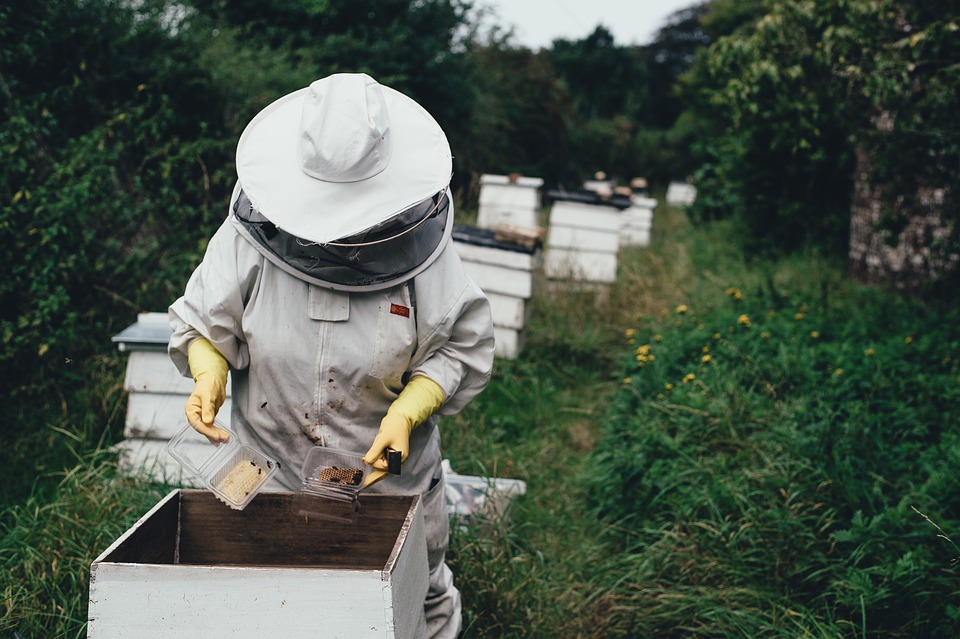19
Sep
Beekeepers Take EPA to Court Over the Bee Toxic Insecticide-Sulfoxaflor—Again

(Beyond Pesticides, September 19, 2019) A coalition of beekeepers is suing the U.S. Environmental Protection Agency (EPA) for its recent new use registrations of the neonicotinoid-related insecticide sulfoxaflor on bee-attractive crops . The environmental nonprofit Earthjustice is representing the Pollinator Stewardship Council, the American Beekeeper Federation, and Jeff Anderson—a beekeeper. This is the second suit of its kind to be filed against the agency in the past month: The Center for Biological Diversity and Center for Food Safety have also filed a lawsuit in the 9th Circuit Court of Appeals on the use of sulfoxaflor on over 200 million acres of crops that draw in pollinators to forage on poisoned nectar, pollen, and guttation droplets.
Sulfoxaflor is a systemic insecticide whose mode of action is the same as neonicotinoid pesticides. After application, the chemical is absorbed and distributed throughout the plant, including pollen and nectar. These insecticides are selective agonists of insects’ nicotinic acetylcholine receptors—they bind to the receptor and cause it to activate. The impact on foraging bees is generally sublethal, but devastating on a population level.
At the request of industry, EPA waived the legal requirement for a full-field study of sulfoxaflor’s impacts on pollinators, erroneously stating that further research would “not add meaningful input to our conclusions.” Under EPA’s approval, the chemical can be aerially sprayed with no buffer zone and applied before and during bloom periods when pollinators are most active.
“Honey bees and other pollinators are dying in droves because of insecticides like sulfoxaflor, yet the Trump administration removes restrictions just to please the chemical industry,” stated Greg Loarie, Earthjustice attorney. “This is illegal and an affront to our food system, economy, and environment.”
Beekeepers were behind the original impetus to get sulfoxaflor registration limited from blooming bee-attractive crops such as sorghum and cotton; Mr. Anderson and the American Beekeeper Federation were also on that initial coalition of litigants during the 2013 lawsuit against EPA.
After a 2015 decision in favor of beekeepers, EPA regularly utilized the “emergency exemption” rule under Section 18 of the Federal Insecticide, Fungicide, and Rodenticide Act (FIFRA) to circumvent restrictions–a move that was continuously noticed and lambasted by environmental advocates.
The Bee Informed Partnership’s latest survey estimates that beekeepers lost 40% of their honey bee colonies between April 2018 and April 2019, and pollinators as a whole are under threat. As scientists and beekeepers tally up reasons to change farming practices to protect pollinators from poisons such as sulfoxaflor–including entire ecosystem collapse, EPA marches obstinately in the opposite direction under the directive of corporate interests.
Michele Colopy of the Pollinator Stewardship Council stated, “It is inappropriate for EPA to solely rely on industry studies to justify bringing sulfoxaflor back into our farm fields.” She continued, “Die-offs of tens of thousands of bee colonies continue to occur and sulfoxaflor plays a huge role in this problem. EPA is harming not just the beekeepers, their livelihood, and bees, but the nation’s food system.”
With EPA failing to take even the most basic steps to protect declining pollinators, it is up to concerned residents to get active in their state and community and demand change. Work to pass policies that eliminate sulfoxaflor and a broad range of systemic pesticides by promoting organic land care. For help in organizing your community, reach out to Beyond Pesticides at [email protected] or 202-543-5450.
All unattributed positions and opinions in this piece are those of Beyond Pesticides.
Sources: Earthjustice, New York Times











Please stop the us of this toxic chemicals.
September 30th, 2019 at 6:44 am